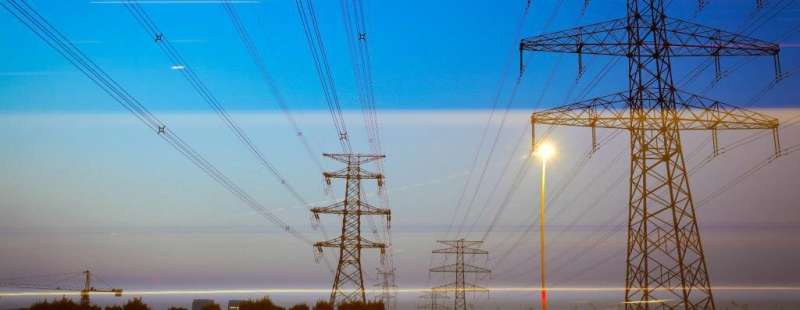New database to monitor national energy use and carbon emissions

How much of the Swedish chemical industry's energy use is from renewables and how much from fuel oil? What are the global trends in fossil fuels consumption over the last decades? The new online World Input-Output Database (WIOD) environmental accounts, launched today by the European Commission's Joint Research Centre (JRC), helps to answer these, and similar questions through data on the industrial and household energy use of residents in more than 40 countries and their corresponding CO2 emissions for the period 2000-2016.
Snapshots of recent trends in worldwide energy use
Covering the 28 EU countries and 15 other major economies in the world, including the United States, Japan, China, Brazil, India and a rest of the world region, the new JRC database gives us the recent trends until 2016 in worldwide energy use of their residents, such as:
- The United States (19 percent of the global fossil fuels consumed), China (17 percent), and the EU (15 percent), were the regions with the highest level of global fossil fuels consumption during the period 2000-2016, as well as for global emissions of CO2 (17 percent, 23 percent and 13 percent, respectively). Nonetheless, the evolution of each region during the period 2000-2016 has been different. China and India more than doubled their fossil fuels use and emissions, while the EU has led in reducing fossil fuels use and emissions; as a result, the 2016 levels were 10 percent lower than the values in 2000.
- In 2016, 39.5 percent of total global energy use came from coal, coke and crude oil, 14.1 percent from natural gas, followed by electricity and heat at 11.8 percent, and renewable sources accounting for 8.2 percent. The gross energy concept used in this database includes all sources of demand for energy, even those produced from other energy sources such as electricity or heat.
- Between 2000 and 2016, the global energy use from electricity and heat (+54 percent), natural gas (+45 percent), renewables (+38 percent) and coal, coke and crude oil (+37 percent) grew more rapidly than the overall total gross energy use increase (+36 percent).
- Globally, the share of fuel oil and gasoline in total energy use has decreased from 12.5 percent in 2000, to 9.2 percent in 2016, and in the EU from 14.7 percent to 7.6 percent.
Snapshots of recent trends in EU energy use
- The EU's gross energy use from coal, coke and crude oil is lower than the global average (30.9 percent, vs global 39.5 percent), followed by 14.7 percent from natural gas, and 12.9 percent from electricity and heat.
- Contrary to the global trends, in the EU, overall energy use decreased by nearly 6 percent between 2000 and 2016, with coal, coke and crude oil decreasing by 16 percent. The highest growth use during the same period has been in renewables (+90 percent).
Snapshots of recent trends in CO2 emissions
- Globally, CO2 emissions grew by 43 percent between 2000 and 2016. Using the resident-based principle, this growth came especially from emerging economies such as China, India, Indonesia and Turkey. The largest decreases were observed in the European Union, particularly in countries such as Greece, Sweden, the United Kingdom, Czechia, Italy, Portugal and Belgium.
- In the European Union, the electricity, gas, steam and air conditioning supply industries emitted 30 percent of the total EU generated CO2 emissions during the measured period, followed by households, which accounted for 21 percent of the accumulated emissions.
Who will use the WIOD database?
Primarily targeting policy makers and researchers, the database covers global energy consumption, efficiency, energy splits and trends, as well as CO2 emissions generated in the EU and globally, with differentiation between industries and households.
It also offers easy access to a wealth of data for journalists and anyone interested in the worldwide environmental footprints of countries.
EU policy makers have been using previous versions of this WIOD environmental database for reporting on the progress achieved towards the Energy Union, as well as within the European Semester process.
Novelties in the database
The new JRC World Input-Output Database (WIOD) environmental accounts (release 2019) database is complete and consistent with the WIOD economic accounts database.
A technical report describing the methodology used accompanies the database.
The main novelties of the database are its completeness in terms of time (2000-2016) and geographical coverage (more than 40 countries) and the residence principle on which the energy uses are reported.
Monitoring energy used by country of residence, and not geographical location
Crucially, the database differs from traditional energy and emissions statistics, as it allocates energy use and emissions according to the country of residence of the user/emitter, and not the country in which it takes place.
For example, the energy use and emissions generated by Germans fuelling their cars in Luxembourg and commuting there are traditionally allocated to Luxembourg; and energy use and emissions of Danish ships moving goods from Finland to Sweden are allocated to either Finland or Sweden.
In this database, such uses are allocated to Germany and Denmark, respectively.
In this way, this database complements the traditional energy statistics, balances and derived indicators, such as those used for the United Nations Framework Convention on Climate Change (UNFCC) reporting or the Emission Database for Global Atmospheric Research (EDGAR).
The UNFCC and EDGAR databases constitute the main reference data source for EU climate and energy policies and serve the countries to report on their energy and emissions targets.
Provided by CORDIS





















